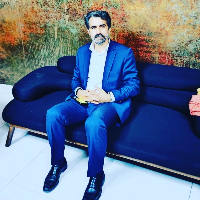An Analysis of the Indicators Affecting the Inclusiveness of Urban Spaces: A Case Study of Ilam
The development processes of an inclusive city should include all citizens, their social needs, and their activities. Inclusive spaces are those that provide the necessary basis for the presence of different people with different characteristics. They provide all the facilities needed for different groups of society, especially the elderly, the disabled, women, and children.The World Bank defines inclusiveness with an operational framework covering 20 dimensions (such as access to basic services, slum upgrading, spatial access to jobs, etc.) in three broad categories, i.e., spatial, social, and economic inclusion. Given the broadness of the concept of inclusive growth/development/cities, extant studies often specify two fundamental questions for operationalization, i.e., inclusive of what and inclusive of whom. Thereby, despite using the similar concept of an inclusive city, its underlying meaning and the theoretical grounds in each study can be quite different. For measuring equality and inclusive development of cities, some researches focus on the women safeties or designing cities for disabled while others define safety as the main indicator. Among different attitudes about the inclusive city, many researchers highlighted the role of different indicators like economic factors, housing, immigrants, races, aging, women's safety, and disabled people. We emphasize on the importance of the formation of equal social interactions for all city dwellers as a major indicator for measuring the inclusiveness of the urban space.The effective factors affecting the equal social interactions of urban spaces include the physical properties of the environment (objective and subjective). Physical factors include elements such as lighting, symbols, parking spaces, urban furniture, texture, and geographic differences. Internal relations include parameters such as security, accessibility, readability, awareness, maintenance, performance, and flexibility. By studying the existing theories of urban space quality which are presented in Table 1 the following components have been extracted with respect to semantic similarities between the proposed parameters. The extracted components are classified into the physical and qualitative categories:1-Qualitative components: security and comfort, sense of belonging, social interactions, nightlife, urban readability, aesthetics, vitality, human scale, and place identity.2-Physical components: usage diversity, access to services and facilities, climatic comfort, urban congestion, urban furniture, and walkability.
The purpose of this study was to analyze the differences between life quality indicators in an inclusive city. The life quality indices including 15 different components were assessed for different groups living in the fourteen districts of Ilam city including children, women, the elderly, and the disabled. The special geographical features of Ilam city such as rugged topography, sloping urban lands, existence of various canals and valleys, and historical factors such as low antiquity, socio-economic conditions, multiplicity of informal settlements, worn and old textures are the main factors impacting the quality of urban public spaces of Ilam city. Therefore, the space quality is unpleasant for all different urban groups such as the elderly, the disabled, children and women, and from this perspective, citizens should face many problems and difficulties.Therefore, while reviewing the literature of the subject and paying attention to the main and important points in the theories about the quality of urban environment, we analyze the difference between the situations of urban spaces in terms of observing the criteria of universality of the city. We consider all indicators together and individually in the fourteen districts of Ilam city. The main questions of this research are: 1- What is the quality of the public spaces of different districts of Ilam city in terms of the components of an inclusive city? 2- What is the rank of the fourteen districts of Ilam city in terms of all indicators and individual indicators of an inclusive city? What are the most appropriate and inappropriate urban areas in this regard?The research method in this study is descriptive-analytic and data gathering is done through the survey and questionnaire tools. The statistical population is residents of Ilam with a population of 194,000. Using the Cochran's formula, a statistical sample of 383 people was randomly selected and questionnaires were distributed among the residents according to population. In this questionnaire, using 38 metrics in the form of 15 components, the city of Ilam was studied and analyzed from the perspective of observing the criteria of the inclusive city. Data were analyzed by SPSS software using one-sample t-test, f-test, and ANOVA analysis.
There were significant differences between the studied life quality indices in fourteen districts of Ilam except for place identity. The difference in the overall indicators was also significant. Informal settlements of Banbarz, SabzieAbad, Ostandari, and Hanivan suffer from a poor life quality due to the inclined topography, inadequate urban lands, and urban-rural texture. In contrast, modern areas such as old airport, Sad-Dastgah, Seda-Sima, and Janbazan enjoy better life quality due to adequate land, flat land, modernization, and higher income of citizens.
Rugged and mountainous topography of Ilam, the gradient of urban lands, the formation of suburbs in inappropriate and inclined urban landscapes, presence of old textures in Banbarz, SabzieAbad, Ostandari, and Hanivan, adverse effects of rural migration, and the existence of different valleys and watercourse are effective factors in degrading the life quality components of the inclusive city in the fourteen districts of Ilam. To improve the quality of life in the fourteen districts of Ilam from the perspective of the resident requirements of an inclusive city, special attention must be paid to Banbarz, SabzieAbad, Ostandari, and Hanivan in urban development planning, policymaking, and development projects of the inclusive city.
- حق عضویت دریافتی صرف حمایت از نشریات عضو و نگهداری، تکمیل و توسعه مگیران میشود.
- پرداخت حق اشتراک و دانلود مقالات اجازه بازنشر آن در سایر رسانههای چاپی و دیجیتال را به کاربر نمیدهد.


